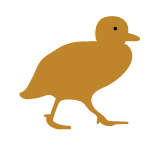This course introduces students to a new approach to the study of diplomacy and world politics. Historically, diplomatic studies has been a theory-light if not atheoretical field, with diplomatic history and diplomat's memoirs serving as the standard reading material for the field . Over the past two decades, however, the field of diplomatic studies has experienced a transformation. The up-close study of who diplomats are and what they do has emerged as the empirical launchpad for a theoretically ambitious and sophisticated approach to the study of international politics. Better known by the labels "practice turn" and “international political sociology,” this avowedly sociological sensibility aims to bring abstract international politics (a world of states and free floating norms and identities) down to the trenches of everyday life and lived experiences. This approach draws on sociologists and anthropologists to show how domestic politics, everyday action, and social structures of class, race, and gender shape inequality, stratification, agency, and power in world politics. This new turn has not only put diplomatic studies on the map of disciplinary IR, it has also attracted a new generation of scholars who are pushing the boundaries of how to study world politics using new theories and methods, and working in new regional and historical contexts. This course surveys this important sociological shift in the study of diplomacy by introducing students to its key thinkers, writings, and unfolding debates.
Learning Outcomes
Upon successful completion, students will have the knowledge and skills to:
- Demonstrate understanding of the major concepts and theories associated with the study of diplomacy in world politics.
- Critically evaluate recent debates in diplomatic studies.
- Cultivate skill in writing and advancing an argument in oral and written work.
- Apply new approaches in diplomacy to the study of contemporary world affairs.
- Demonstrate knowledge of diplomacy beyond in different world regions and beyond Western-centric frames.
Indicative Assessment
- Seminar Participation (10) [LO 1,2,4]
- Short Essay (1500 words) (30) [LO 2,3]
- Final Research Essay (3000 words) (50) [LO 1,2,3,4,5]
- Online Quiz (10) [LO 1,5]
The ANU uses Turnitin to enhance student citation and referencing techniques, and to assess assignment submissions as a component of the University's approach to managing Academic Integrity. While the use of Turnitin is not mandatory, the ANU highly recommends Turnitin is used by both teaching staff and students. For additional information regarding Turnitin please visit the ANU Online website.
Workload
Approximately 130 hours comprising seminars as well as associated preparation, independent study, and assessment time.
Please note this is a general guide, averaged over the semester and the final hours ultimately depend on the individual's ability in reading and writing.
Prescribed Texts
To be advised.
Fees
Tuition fees are for the academic year indicated at the top of the page.
Commonwealth Support (CSP) Students
If you have been offered a Commonwealth supported place, your fees are set by the Australian Government for each course. At ANU 1 EFTSL is 48 units (normally 8 x 6-unit courses). More information about your student contribution amount for each course at Fees.
- Student Contribution Band:
- 14
- Unit value:
- 6 units
If you are a domestic graduate coursework student with a Domestic Tuition Fee (DTF) place or international student you will be required to pay course tuition fees (see below). Course tuition fees are indexed annually. Further information for domestic and international students about tuition and other fees can be found at Fees.
Where there is a unit range displayed for this course, not all unit options below may be available.
| Units | EFTSL |
|---|---|
| 6.00 | 0.12500 |
Course fees
- Domestic fee paying students
| Year | Fee |
|---|---|
| 2025 | $4680 |
- International fee paying students
| Year | Fee |
|---|---|
| 2025 | $6720 |
Offerings, Dates and Class Summary Links
ANU utilises MyTimetable to enable students to view the timetable for their enrolled courses, browse, then self-allocate to small teaching activities / tutorials so they can better plan their time. Find out more on the Timetable webpage.
Class summaries, if available, can be accessed by clicking on the View link for the relevant class number.


